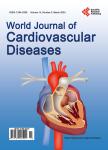MRI Investigation of New Approach to Improve the Recovery of Myocardial Ischemia Reperfusion Injury by Treatment with Intralipid<sup>®</sup>
MRI Investigation of New Approach to Improve the Recovery of Myocardial Ischemia Reperfusion Injury by Treatment with Intralipid<sup>®</sup>作者机构:Rangos Research Center Animal Imaging Core Children’s Hospital of Pittsburgh of University of Pittsburgh Medical Center Pittsburgh PA USA Department of Developmental Biology School of Medicine University of Pittsburgh Pittsburgh PA USA Department of Biological Sciences Carnegie Mellon University Pittsburgh PA USA Department of Neurological Surgery University of Pittsburgh Pittsburgh PA USA Department of Epidemiology University of Pittsburgh Pittsburgh PA USA
出 版 物:《World Journal of Cardiovascular Diseases》 (心血管病(英文))
年 卷 期:2016年第6卷第10期
页 面:352-371页
学科分类:1002[医学-临床医学] 100201[医学-内科学(含:心血管病、血液病、呼吸系病、消化系病、内分泌与代谢病、肾病、风湿病、传染病)] 10[医学]
主 题:Ischemic Reperfusion Injury Infarction Intralipid® Magnetic Resonance Imaging Macrophage/Monocyte
摘 要:Background: Despite advances in revascularization and thrombolytic therapy, the outcome of patients after acute myocardial infarction (MI) could be complicated by ischemia reperfusion injury (IRI) and subsequent ventricular remodeling. Inflammation plays a central role in IRI. Intralipid® has been shown to reduce infarct size after IRI, but its effects on myocardial inflammation have not been addressed. The goal of this study is to investigate the effects of Intralipid® on in-situ myocardial inflammation and to better characterize its cardio-protective effects. Methods and Results: Cellular MRI was used to evaluate myocardial inflammation of iron-oxide-labeled macrophage infiltration. Cardiac MRI was used to evaluate global and regional ventricular wall motion, as well as myocardial perfusion and infarction in a rat model. Our results show that the Intralipid® treatment following IRI can preserve global and regional ventricular wall motion, and reduce the infarct size. The In-tralipid®-treated rats exhibit reduced myocardial macrophage infiltration, indicating reduced in-situ myocardial inflammation. Conclusions: Our results indicate that the Intralipid® treatment can protect the heart against IRI and can specifically reduce in-situ myocardial inflammation. Additional study is needed to assess if treatment using Intralipid® after LAD occlusion could improve the recovery of patients suffering from a heart attack and also reduce future development of heart failure.



